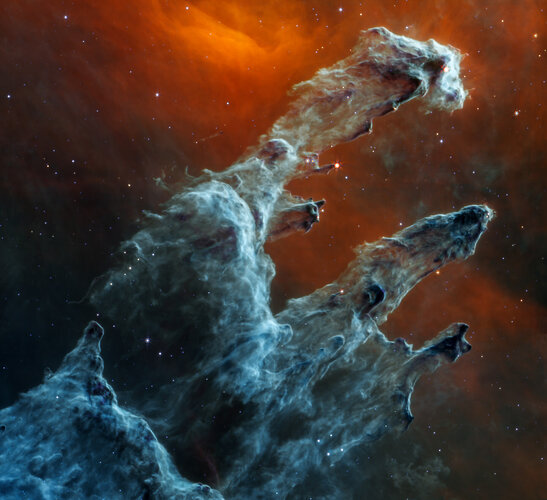This scene was first imaged by the NASA/ESA Hubble Space Telescope in 1995, and again in 2014, but many other world-class observatories have also stared deeply at this region, such as ESA's Herschel Telescope. Each advanced instrument offers researchers tantalising new details about this region, which is practically overflowing with stars. With every observation, astronomers gain new information, and through their ongoing research build a deeper understanding of this star-forming region. Each newly imaged wavelength of light and each new instrument delivers ever more precise information about the gas, dust and stars, which informs researchers’ models of how stars form. As a result of the new MIRI image, astronomers now have data in mid-infrared light at higher resolution than ever before, and will analyse its far more precise dust measurements to create a more complete three-dimensional landscape of this distant region.
Haunting portrait: Webb reveals dust and structure in Pillars of Creation
Written by Copernical Team Friday, 28 October 2022 13:00
This is not an ethereal landscape of time-forgotten tombs. Nor are these soot-tinged fingers reaching out. These pillars, flush with gas and dust, ‘bury’ stars that are slowly forming over many millennia. The NASA/ESA/CSA James Webb Space Telescope has snapped this eerie, extremely dusty view of the Pillars of Creation in mid-infrared light – showing us a new view of a familiar landscape.


